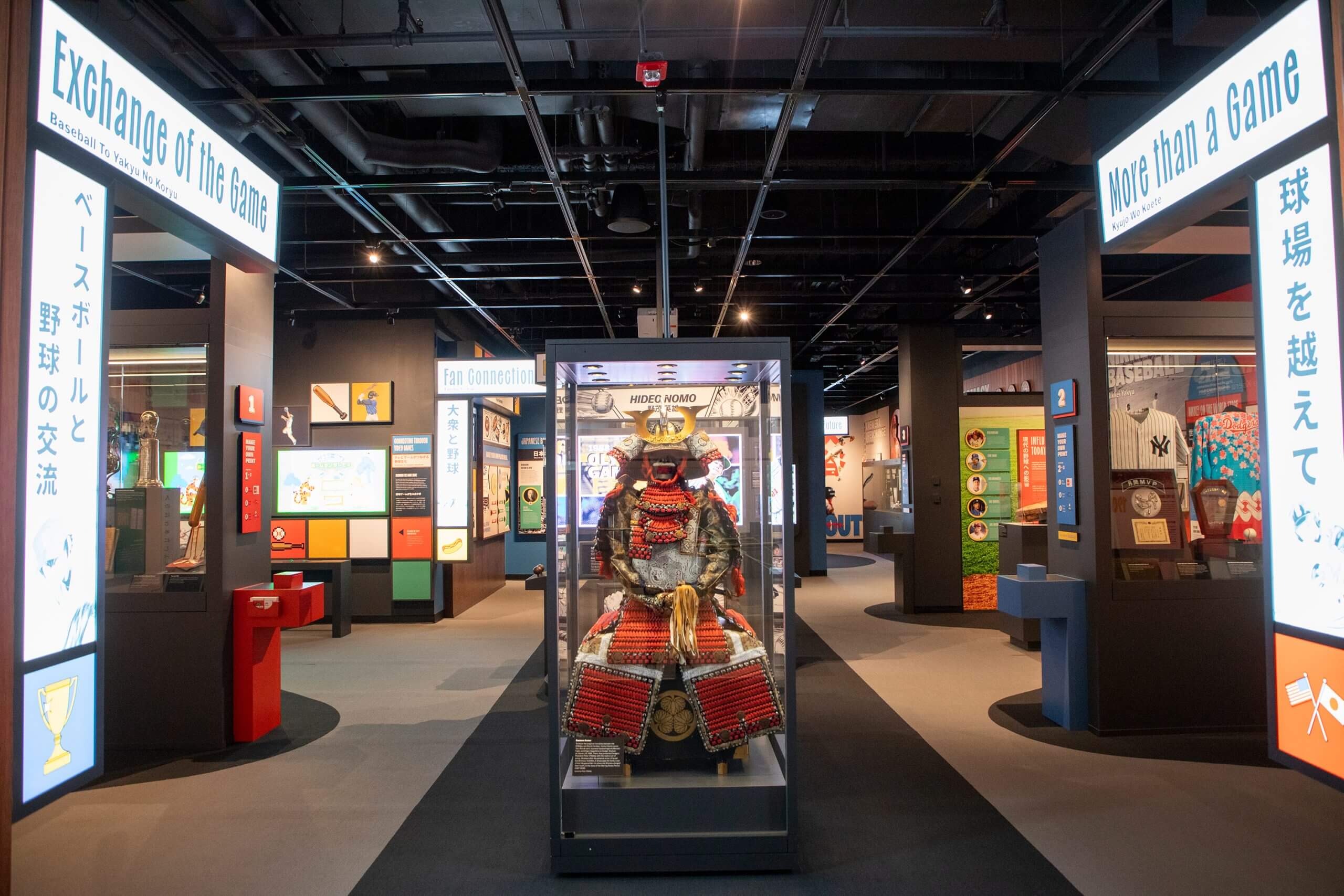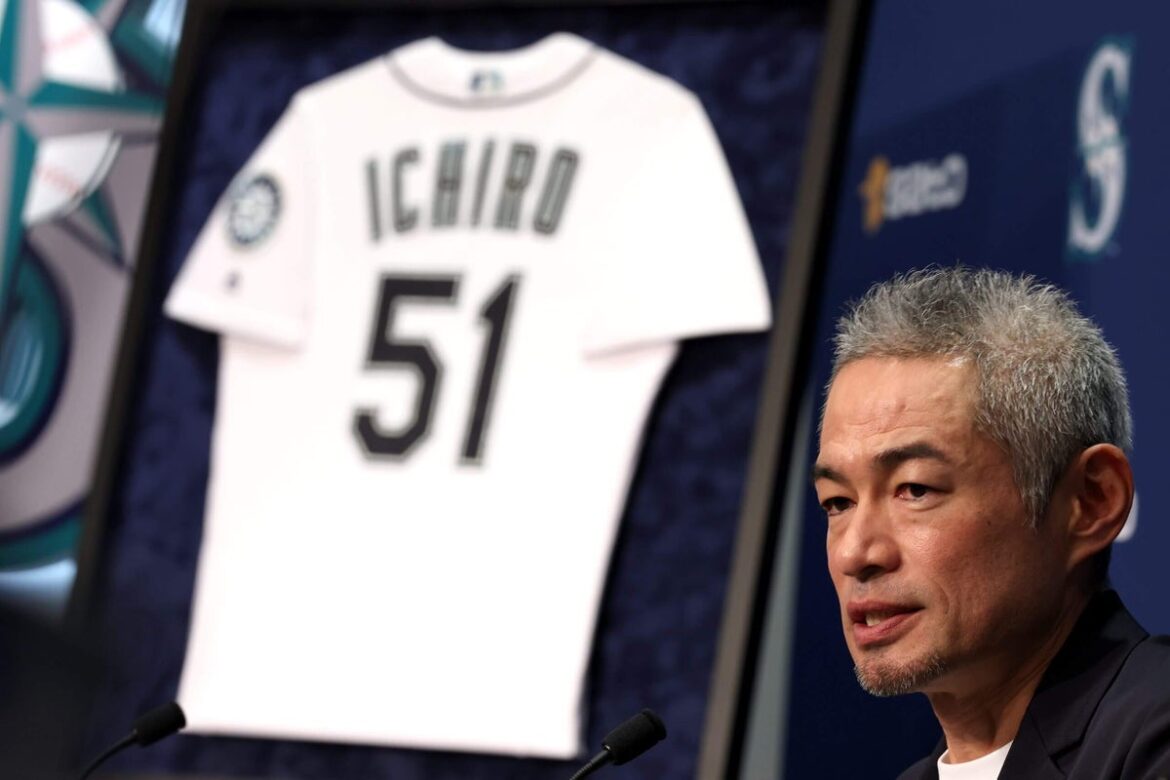COOPERSTOWN, N.Y. — Mom-and-pop apparel and memorabilia stores have long lined the picturesque Main Street in the upstate New York town that’s home to baseball’s Hall of Fame. When visitors for this year’s induction ceremony arrive in two weeks, they might find something new: Japanese-speaking interpreters to help them shop.
The headliner of this year’s Hall of Fame class is outfielder Ichiro Suzuki, who amassed 3,089 hits in Major League Baseball and soon will become the first Japanese player enshrined in the game’s hallowed museum.
The number of visitors to Cooperstown, N.Y., a town of a couple thousand, always fluctuates with the star power of a given year’s inductees. But this year presents a new wrinkle: the area has never expected an influx of fans from so far away.
“The biggest issue I was thinking about over the winter is like, how do we communicate?” said Vincent Carfagno, owner of Seventh Inning Stretch, which is in its 31st summer and will have interpreters available July 25-27. “I know we all have phones, and you can do Google Translate, but it’s just easier in person if someone wants to talk about a certain piece.”
Cooperstown isn’t home to a sizable Japanese-American population. Right across from Carfagno’s store on Main Street sits the only sushi restaurant in town. To find interpreters, Carfagno took to Facebook.
“A couple of my friends knew some people,” he said. “There’s a Japanese teacher and her husband that have never been here, and wanted to come anyway.”
Cassandra Harrington, president of an organization that promotes tourism in the area, is printing up 3,000 village and museum maps that are translated into Japanese. But she said that as far as other planned changes for new clientele, business owners don’t want to make too many assumptions about what foreign visitors may seek. A local confectioner was considering making fudge with sake in it, but wasn’t sure how that would be received.
“They’re trying to remain culturally sensitive,” Harrington said.
The National Baseball Hall of Fame and Museum started preparing for Suzuki’s induction two years ago, said the organization’s president, Josh Rawitch. That work culminated this week when the Hall opened an exhibit celebrating the ways Japanese and American baseball are intertwined.
Displays in “Yakyu | Baseball: The Transpacific Exchange of the Game” honor not only Suzuki, but the pitcher Hideo Nomo — a trailblazer as the second Japanese player ever to reach the majors — and Shohei Ohtani of the Los Angeles Dodgers, the most prominent player in either country today. With a budget of roughly $2.5 million, it’s one of the most expensive exhibits the non-profit has created, Rawitch said.
On a bronze cast of a baseball, fans can place their hand on the same spots that Nomo would grip the ball when throwing his signature forkball.

Yakyu | Baseball: The Transpacific Exchange of the Game features artifacts and stories celebrating the shared culture of baseball between the United States and Japan. (Milo Stewart Jr. / National Baseball Hall of Fame and Museum)
A video-and-audio installment later shows what it’s like to be in the stands for games in both countries. In one clip at Yankee Stadium, the Bleacher Creatures chant the names of the Yankees’ starters — “roll call,” as it’s known. Then the viewer is transported to Japan, where Rakuten Eagles fans release balloons into the sky en masse.
Several items were sourced from Japan, such as a happi coat presented to Hall of Famer Lefty Gomez during a 1934 tour of the country, making for a more complicated procurement process than the Hall usually encounters when seeking artifacts on loan.
But even amidst the preparations, there is an air of mystery in Cooperstown in the lead-up to the July 27 ceremony: how many fans will actually make the trek from Japan?
“There’s a good degree of uncertainty,” said Vincent Russo, who runs another Main Street shop, Mickey’s Place, where an interpreter will be available. “Is it 5,000? Is it 10,000? Is it 1,000?”
The cost to fly across the Pacific isn’t the only concern for travelers from Japan. After landing some four hours away at one of the major airports in Queens, a four-hour or so drive awaits, some of it on backroads.
“The opportunity of having the first ever Japanese baseball player and somebody who was just so uber-popular in Japan is going to drive people here,” Rawitch said. “But I also think we have to be realistic about the fact that it is not easy to get from Tokyo to Cooperstown. And so do I imagine there’s going to be tens of thousands of Japanese fans here? Probably not. But there’s going to be tens of thousands of fans here, and we want to make sure that we’re welcoming regardless of where they’re coming from.”
Most identified with the Seattle Mariners, Suzuki is not the only attraction this year. He’s going into the Hall as part of a five-player class that includes C.C. Sabathia, a longtime New York Yankees pitcher who should bring plenty of visitors by car.
But other forces are at play. This year’s inductees were revealed on Jan. 21, one day after President Donald Trump was inaugurated. That’s significant because while everyone long expected Suzuki would receive enough votes to be inducted, most induction weekend reservations come after the announcement, according to Jay Smith, whose company Sports Travel and Tours sells licensed packages through the Hall.
U.S. tourism has dropped this year, a hot topic at a tourism conference Smith recently attended.
“The international markets that I had meetings with, they are very well aware of the downward trend of interest for people coming to the U.S. at this point,” Smith said.
In the final week of June, Smith said he had about 75 people signed up for an induction package from Japan.
“We thought that there would be more,” he said.
Meanwhile, the Hall of Fame expects more than 60 media members representing some 20 Japanese news outlets will cover Suzuki’s induction.
But even when the Hall is trying to figure out how many U.S. attendees will arrive, a lot of guesswork is involved. The induction ceremony is not a ticketed event, and plenty of people book their travel independent of travel agencies.
The Japanese American Association of New York and Japanese Chamber of Commerce and Industry of New York offer a one-day tour bus from Manhattan on induction day at a cost of $305. But that amount too can be hefty, said Koji Sato, president of JAANY.
“Because Ichiro is being inducted, that makes it very desirable to go,” said Sato, who plans to attend himself. “The average Japanese, let’s say restaurant worker, in New York might not want to spend that much money for a day. But it all depends.”

Ichiro Suzuki was a Seattle Mariners icon. (Lindsey Wasson / Getty Images)
Induction weekend is not the only game in town for local businesses, which have a busy summer season as youth baseball teams play tournaments in town. But they do feel the impact of turnout, and the induction weekend headliner genuinely matters.
Russo of Mickey’s Place said that the year Cal Ripken Jr., the Baltimore Orioles great, went into the Hall, about 8 percent of his annual revenue came from induction weekend. Last year, when Adrian Beltré, Todd Helton and Joe Mauer led the class, it was under 5 percent.
Shopkeepers here still talk about Derek Jeter’s ceremony, which was supposed to be in 2020 but was delayed by the pandemic until after Labor Day in 2021. In a typical summer setting, a Yankees superstar like Jeter would have driven eye-popping sales. Covid-19 made that a painful missed opportunity.
Mickey’s Place hasn’t moved many Suzuki caps yet, but Russo expects that will change over induction weekend. The greater question, he said, is how many Suzuki caps will sell after that. Will Suzuki’s enshrinement newly draw fans to the area?
A new development nearby might help, too. In a few years, Hoshino Resorts, a Japanese hospitality company, is planning to open its first continental U.S. location in Sharon Springs, N.Y., about a half-hour away. The Hall is hoping that dovetails with their own efforts; Rawitch expects the Hall will display its new exhibit for at least five years.
“Regardless of how many people show up this July, whoever does is going to go back home and say, ‘Man, did you see that incredible exhibit they did in Cooperstown, and you can go see each Ichiro’s plaque, and there’s this town that’s just for baseball?’” Rawitch said. “All of that is a five- to 10-year play. It’s not just about July 27.”
(Top photo of Ichiro at his Hall of Fame announcement press conference: Steph Chambers / Getty Images)


AloJapan.com